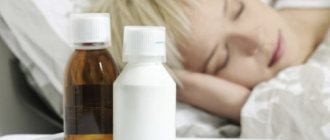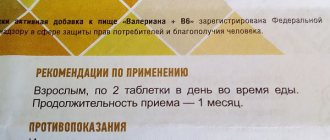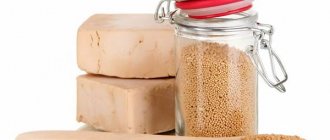An unpleasant greenish coating that smells of moisture and rot is all mold, a microscopic fungus. What happens if you accidentally eat moldy food?
According to Rudolph Bedford, MD, a gastroenterologist at Providence Saint John Medical Center in Santa Monica, California, nothing will likely happen to you. But there are several factors that you should pay special attention to if you accidentally consume mold: Ingestion of some rare types of mold can cause poisoning in the body.
Symptoms of poisoning
Poisoning with any type of cheese (suluguni, braid, blue cheese, brie, etc.) can be caused by the following microorganisms:
- brucellosis;
- salmonellosis;
- listeriosis;
- coli infection.
In each case, the symptoms will be different, so we will analyze each group separately.
Salmonellosis may not appear until 6 hours after ingestion of contaminated cheese, although it may take up to 3 days for symptoms to appear. The main symptoms are diarrhea, vomiting, severe abdominal pain. Poisoning can cause a decrease in blood pressure and increased heart rate. Sometimes the temperature rises sharply and weakness appears.
The main symptoms are diarrhea, vomiting, severe abdominal pain
Upon palpation, the doctor determines an increase in the size of the spleen and liver. If treatment for cheese poisoning (suluguni, brie, blue cheese, pigtail, etc.) is not started on time, it leads to loss of fluid from the body, symptoms such as jaundice, rash, pustules on internal organs and even joint pain develop.
With coli infection, poisoning occurs after eating cheese that contains pathogenic E. coli. This disease usually harms children. Symptoms appear within the first week. They are nonspecific, so diagnosis can only be made after laboratory testing. This disease is accompanied by diarrhea and the presence of blood streaks in the stool. Symptoms of gastroenteritis are often present. If treatment was started on time, poisoning can be completely overcome within three weeks.
A disease called brucellosis is extremely rare. Symptoms may not appear until two weeks after poisoning. They may be as follows:
- recurrent joint pain;
- high temperature (38 or more);
- increased sweat production;
- severe weakness.
Typically, these symptoms do not lead to the idea that this may be poisoning by any type of cheese (suluguni, brie, blue cheese, braid, etc.). The patient begins treatment for flu or cold, but it does not bring any results. At high temperatures, a person feels good. If brucellosis is not detected in time, it can have a negative impact on the musculoskeletal system. The course of this disease is usually chronic, the lymph nodes are enlarged.
Symptoms of poisoning: joint pain, high fever, increased sweating, severe weakness
Symptoms of listeriosis are similar to the previous ones; they include vomiting, diarrhea, and high fever. Severe intoxication occurs. Pain appears in the muscles and joints, as well as in the abdomen. There is a small amount of mucus in the stool. This disease is extremely dangerous for pregnant women, as it can seriously damage the fetus. The disease is most severely suffered by children.
If a child eats moldy bread
A child's body is more sensitive to pathogens, and if a child has eaten moldy bread in considerable quantities, this can manifest itself as vomiting, diarrhea, skin rash, and sometimes choking. Sometimes it is difficult to understand how much contaminated bread a child has eaten to determine the extent of the problem.
What happens if you eat moldy bread?
Mold is a fungus, a pathogenic microbe that multiplies in conditions of excessive humidity and low air circulation.
Its spores fly in the air. These microorganisms can enter the human body through the respiratory tract and digestive system.
First aid and treatment after poisoning
Treatment and first aid for poisoning with cheese products includes standard procedures . The first step is to rinse the stomach with salted water or a weak solution of manganese. After this procedure, the patient must take enterosorbent to remove all toxins and bacteria from the body. To prevent dehydration, you can and should drink as much water as possible; it is better to add soda or salt to it.
It is also necessary to do an examination for the presence of bacteria in cheese if poisoning occurred due to it. Treatment after poisoning consists of gentle nutrition and rest.
Treatment after poisoning consists of gentle nutrition and rest.
Precautionary measures
Following simple rules will allow you to avoid poisoning from moldy bread:
- It is advisable to buy bakery products in well-established retail outlets; it is better if the product is manufactured by a large bakery;
- It is advisable not to buy bread packaged in film - it creates ideal conditions for the development of mold (high temperature and humidity);
- You should only purchase bakery products whose packaging indicates the production time, expiration date, information about the manufacturer, composition, and product certification information. The composition of the loaf will tell you about the use of harmful additives - L-ascorbic acid (E300) speeds up the proofing time, L-cysteine (E920) improves the structure of the dough, sulfur dioxide (E220) slows down the growth of mold, which often indicates the addition of the remains of an old moldy loaf;
- you should not buy bread in reserve;
- It is better to store the loaf in a bread box, preferably a wooden one.
Poisoning with different types of cheeses
There are a lot of rumors about blue cheeses. Many people believe that this product is harmful, although doctors recommend taking it. Blue cheese and Brie should not be eaten by people with impaired microflora. Pregnant women should also avoid it. Poisoning with this noble mold product can occur when the product is spoiled or if it contains pathogenic bacteria.
Brie cheese contains a lot of fat, so it is not recommended for people who are overweight. If you have high cholesterol levels and hypertension, it is also better to exclude Brie from the menu. Eating this product can lead to the development of a dangerous infection called listeriosis. You can be poisoned by salted Brie cheese due to the high content of penicillin in it. They can cause dysbiosis. Brie cheese is best added to food in small portions and very rarely.
Pigtail cheese is contraindicated if you are intolerant to this product. It is not recommended to eat it if you are overweight. Pigtail cheese is prepared with the addition of liquid smoke, which can be harmful to health. You can be poisoned by this product if it contains pathogenic bacteria.
Suluguni cheese is pickled. It is usually prepared from sheep's milk, but other things can be used. Suluguni cheese can be poisoned if pathogenic microflora enters it during production. Milk taken from sick animals can also cause poisoning with suluguni cheese. Improper preparation of suluguni cheese can also lead to severe poisoning.
Brie cheese contains a lot of fat
The finished product must undergo examination. Milk taken from a cow with leukemia should under no circumstances be used to make suluguni cheese.
What can be done with moldy bread - where to put it
What can you do with moldy bread? It turns out it is possible, but it all depends on the degree of damage. There is a recipe for making crackers, but in this case it is important that the pieces are not heavily affected by spores.
Then cut the crust about a centimeter thick along the entire perimeter of the loaf or loaf and cut into small pieces. Next, heat the frying pan, add butter or sunflower oil and fry the small prepared pieces. The cooking time for such crackers depends on the degree of spore damage.
It is important to remember that this procedure is contraindicated with a whole loaf; you must definitely cut it into small pieces. Bread with pronounced gray or green spots of mold should not be treated in this way.
Severely damaged loaves in villages are given to domestic animals, but this again depends on the degree of damage. Severely moldy food should not be given to living creatures.
Poisoning in children
It must be remembered that poisoning in children is much more complicated than in adults, since their body cannot yet cope with toxins. For a child to be poisoned, it is enough to eat a small piece of spoiled cheese, so be very careful and watch what your baby eats!
At the slightest suspicion of poisoning and when symptoms appear, you must immediately call a doctor, and at this time it is necessary to help the baby and prevent the absorption of toxins into the blood.
Here's a little cheat sheet for parents:
- do not scare the child, calm down and do not panic;
- You need to give the baby a gastric lavage, after which the vomiting is stopped;
- after washing, the child is given a drug that prevents the absorption of toxins into the blood, this can be activated carbon;
- give the victim Regidron (one sachet per 1 liter of water, 10 ml every 20 minutes), it will stop vomiting and prevent dehydration;
- During the day you need to drink Smecta (it is diluted in two glasses of water);
- after poisoning, the child is given Motilium for six to seven days (the dosage is indicated in the instructions);
- at high temperatures, antipyretic drugs are given.
At the slightest suspicion of poisoning, you should immediately call a doctor
Is mold dangerous?
Mold itself, in fact, is not so dangerous for humans, since it practically does not reproduce in the body, because for life it needs at least minimal access to oxygen, and this is not present in all organs and systems. For example, in the stomach and intestines (this is where fungi enter with food) there is almost no oxygen, so reproduction there will be impossible. And yet, the main danger to humans is not the fungi themselves, but the substances they secrete, that is, waste products - mycotoxins. Once in the body, they may well cause harm.
Prevention of poisoning
Before purchasing, you must carefully examine the product. Pay attention to the date and expiration dates; information about the manufacturer and storage conditions is equally important. For hard cheeses, you can use the following advice: try pressing on a piece; if liquid flows out of it, this means that it is already expired. If you accidentally eat a spoiled product, monitor your condition.
Cheese is a favorite product for many adults and children, but cases of poisoning still occur sometimes. If symptoms occur, contact your doctor immediately. Timely treatment will help avoid serious consequences.
Tips and how to choose a quality product
Before purchasing store-bought bread, you should carefully read the information about the composition . If there are dyes, preservatives, flavor enhancers, leavening agents, then it is better to give preference to another loaf. Signs of such enhancers are high looseness of the pulp - the bread begins to crumble heavily, remaining hollow inside.
If the bread is sold without packaging with the composition, then you need to choose according to external characteristics:
- A high-quality product always has an even texture.
- When pressed, it easily returns to its original position.
- If there are white streaks, this indicates that fresh dough has been mixed with old dough.
It is better to buy in certified stores, from official manufacturers. Proper storage is very important - the place should be cool and completely dry. Bread bins, especially wooden ones, are not the best place for storage.
Consequences
If you systematically eat moldy foods (regardless of whether the contaminated part has been removed), then such “savings” will eventually result in serious consequences:
- damage to the nervous system in the form of insomnia, hallucinations, confusion, delirium,
- decrease in the number of red and white cells in the blood,
- death (in especially severe cases).
After prolonged inhalation of spores, the patient will experience:
- allergy,
- immunodeficiency,
- exacerbation of existing chronic diseases,
- oncological diseases.
The consequences are truly terrible, sometimes irreparable. But they can be avoided if you follow the classic path - compliance with prevention.
Have you ever had mold poisoning?
- Yes it was
- No, it was not
- There are symptoms now
ResultsPoll Options are limited because JavaScript is disabled in your browser.
- No, there were no 72%, 198 votes 198 votes 72% 198 votes - 72% of all votes
- Currently have symptoms 17%, 47 votes 47 votes 17% 47 votes - 17% of all votes
- Yes, there were 11%, 31 votes 31 votes 11% 31 votes - 11% of all votes
Total votes: 276 08/07/2017 You or from your IP have already voted. Vote
- Yes it was
- No, it was not
- There are symptoms now
You or from your IP have already voted. results











